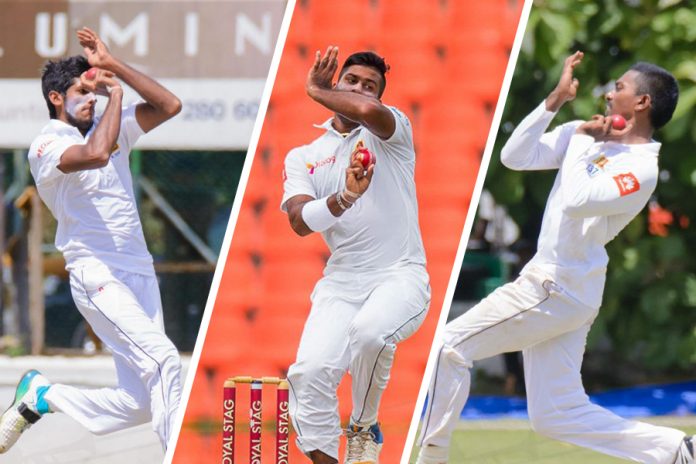Sri Lanka’s hopes of a maiden Test series win in the Caribbean have nosedived after the hammering they received in Trinidad. They could still make it. Stranger things have happened in the sport and West Indies and Pakistan are two of the most unpredictable sides in the world. But the 226-run defeat in the first Test exposed Sri Lanka’s bowling deficiencies big time.
One may argue that with totals of 185 and 226 in Trinidad, the blame should be on the batting unit. But batting slip ups can happen once in a while and you tend to get the feeling that the batsmen will sort themselves out. But more worrying has been Sri Lanka’s inability to bowl the West Indies out even once, something of a trend in recent times.
Twenty-one-year-old Lahiru Kumara bowled at a decent pace and veteran Rangana Herath did a good job but despite playing five front-line bowlers, Sri Lanka were only able to take 15 wickets in the game.
Read: How did Sri Lanka ‘A’ perform in the past 5 years? – Let’s Talk Numbers
While the spin department may still help you to win matches, it is the contributions of seam bowlers that’s worrying. There was some relief when Dhammika Prasad had a brilliant 2015, a year in which he took 41 wickets in nine Tests at an average of 24. Prasad was the world’s eighth highest wicket-taker that year and could have accomplished more had he been not sidelined with injury.
Prasad was expected to make a comeback to Test cricket in May 2016, but wrong diagnosis and incorrect technique during gym work saw him suffering another scary injury. That denied him two more valuable years of cricket due the negligence of the support staff.
Other than Prasad, there has been little promise by fast bowlers. There was the odd spark such as the then 19-year-old Lahiru Kumara’s performance in Cape Town 18 months ago.
Read: Can Hathurusingha address Sri Lanka’s perennial problem with leg-spin?
Sri Lanka’s inability to produce match winning fast bowlers has been something that has existed for a while. When SLC put up the Pace Academy under Rumesh Ratnayake with Champaka Ramanayake as his understudy, there were several talents that emerged, but none went onto make a big impact other than Lasith Malinga.
Part of the problem is because our domestic cricket doesn’t encourage fast bowlers. Games are played on dead tracks with little assistance to fast bowlers and more recently pitches have been too spin friendly and captains do not hesitate to throw the new ball to spin bowlers. It doesn’t help that a prominent member of an outstation club is the ultimate authority in the country when it comes to preparing pitches and he doctors tracks to suit his team who rely heavily on spin.
Kasun Rajitha, who is making his Test debut in St. Lucia has the ability to go onto make a big impact but so did Dushmantha Chameera when he first emerged three years ago.
The wickets prepared for the Provincial Tournament had more quality than the ones prepared for the Inter-Club season and there was a bit for all players and that certainly is the way forward.
Given the quality of Inter-Provincial tournament where Galle emerged champions in both the First Class and one-day tournament, Sri Lanka should do well in the longer run. The combination that they are playing in St. Lucia is an interesting one.
Playing seven batters and four bowlers was the strategy that brought them tremendous success in the past. Between mid-2001 and early 2002, Sri Lanka went onto win ten Test matches in a row. They continued to make an impact in the longer format of the game for the next five years or so and the combination that was used during that period was seven batsmen and four bowlers.
Read: Sri Lanka’s perpetual top order shuffle
Why Sri Lanka could afford seven batters those days was that they had a champion bowler in Muttiah Muralitharan, who literally kept one end occupied throughout the day. Successive Sri Lankan captains like Sanath Jayasuriya, Hashan Tillakaratne, Marvan Atapattu, Mahela Jayawardene and Kumar Sangakkara could use Murali as both the attacking and defensive option and he did a brilliant job.
Captains even at times didn’t mind playing a half fit Murali as it was evident during the 2011 World Cup final in Bombay and on many other occasions.
It was a big call to play four bowlers with the series at stake in St. Lucia. Even after playing five bowlers in Trinidad, Sri Lanka were not able to bowl out the West Indies even once. Whether Akila Dananjaya can give that luxury to Sri Lanka where they can continue to stick with a seven-four combination remains to be seen.














